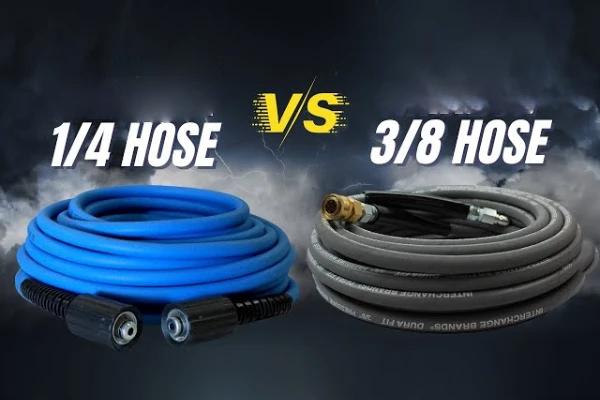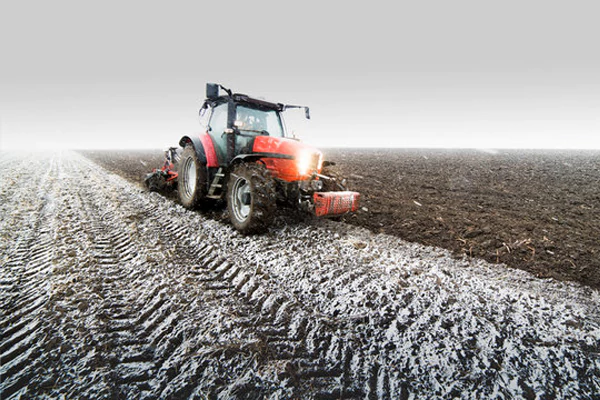Pressure washers are a convenient tool for cleaning various surfaces, but their hoses can wear out quickly with frequent use. A damaged or leaking pressure washer hose can cause a drop in water pressure, which can make cleaning tasks more difficult and time-consuming.
However, there are steps you can take to extend the life of your pressure washer hose and avoid the cost of replacing it. In this article, we will discuss various ways to prolong the lifespan of your pressure washer hose.
Before we dive into the specifics of how to extend the life of your pressure washer hose, it is important to understand why it is necessary. Pressure washer hoses are made of materials that can easily wear out with constant use, leading to leaks, cracks, and other forms of damage.
The following tips will help you maintain the condition of your hose and prevent damage.
Check for Leaks
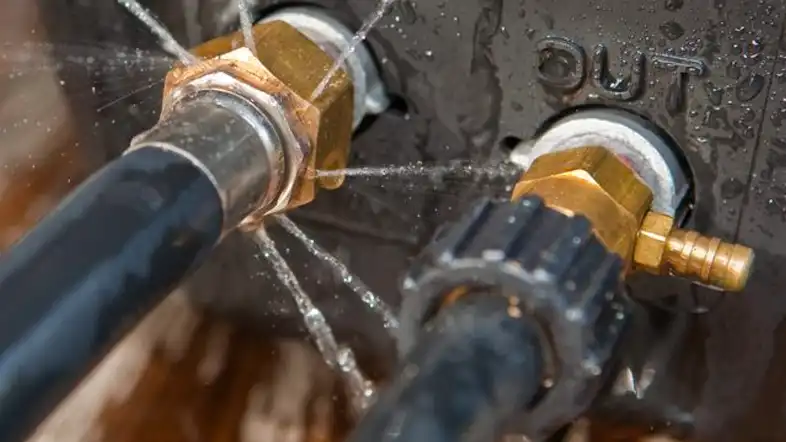
When checking for leaks, it’s important to inspect the entire hose thoroughly. Check for any cracks, punctures, or signs of wear and tear. Leaks can be caused by a variety of factors, including age, exposure to extreme temperatures, and improper storage. If you find a leak, it’s important to address it as soon as possible to prevent further damage and reduce the risk of injury.
Replacing the hose is usually the best option if you find a leak, as leak seal tapes are only a temporary fix. However, if you need to use a leak seal tape to temporarily seal a leak, make sure to choose one that’s specifically designed for use with pressure washer hoses. These tapes are typically made from a high-strength, waterproof material that can withstand the high pressure of a pressure washer.
In addition to checking for leaks, it’s also important to inspect the hose connections for any signs of damage or wear. The connections between the hose and the pressure washer, as well as the spray gun, are often the weakest points in the system and can be prone to leaks. Make sure to tighten all connections properly and replace any damaged or worn parts as needed.
Regularly checking for leaks and addressing any issues promptly can help extend the life of your pressure washer hose and keep your pressure washer working effectively for years to come.
Store Properly
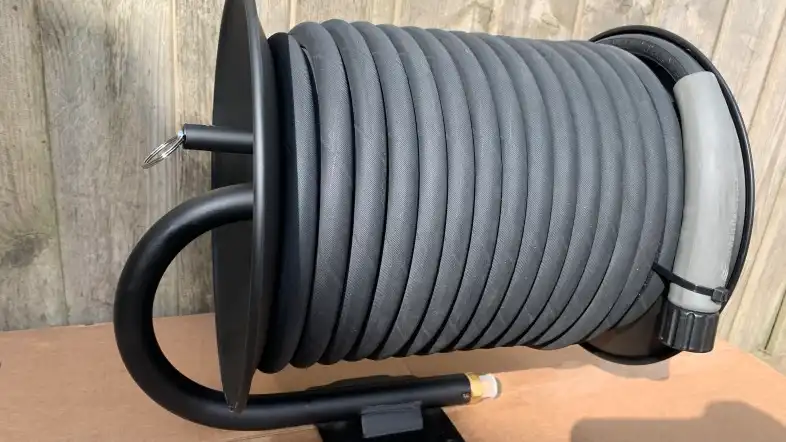
When not in use, it’s important to store your pressure washer hose properly to prevent kinking and other forms of damage. One of the best ways to store your hose is by hanging it on a hook or reel in a cool, dry place. This not only helps prevent kinks and twists but also keeps the hose off the ground, reducing the risk of damage from debris and other hazards.
If you don’t have access to a hook or reel, you can also coil the hose neatly and store it in a container or on a shelf. Make sure to avoid leaving the hose lying on the ground or exposed to direct sunlight, as this can cause it to weaken and eventually break.
Another important consideration when storing your pressure washer hose is the temperature. Extreme heat or cold can cause the hose to deteriorate faster and reduce its lifespan. Try to store your hose in a location with a moderate temperature, such as a garage or shed.
In addition to proper storage, it’s also important to handle your pressure washer hose with care when using it. Avoid dragging it over rough or sharp surfaces, and make sure to avoid running over it with heavy equipment or vehicles.
By taking these steps to store your pressure washer hose properly, you can help extend its life and ensure that it continues to work effectively for years to come.
How Do You Store Hydraulic Hoses? Complete Guide to Hydraulic Hose Storage
Avoid Kinking Pressure Washer Hose
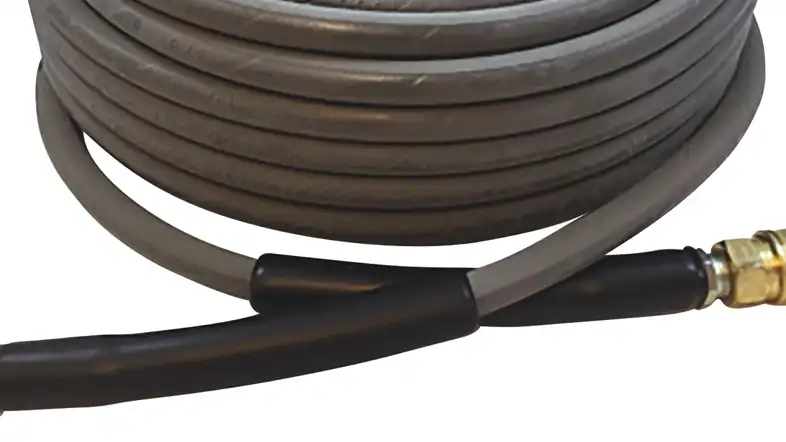
Kinking is one of the most common causes of pressure washer hose damage. When the hose becomes kinked, the flow of water can be restricted, causing damage to the hose and reducing the efficiency of the pressure washer.
To avoid kinking your pressure washer hose, it’s important to pay attention to the way you handle it. When you’re moving the hose or adjusting it during use, make sure to avoid twisting or bending it too sharply. Instead, try to keep the hose as straight as possible.
Another way to avoid kinks is by using the right length of hose for the job. If you’re using a hose that’s too short, you may be tempted to pull it taut or stretch it to reach the area you need to clean. This can cause kinking and other forms of damage. On the other hand, if you’re using a hose that’s too long, it can become tangled or twisted, which can also cause kinks.
When storing your pressure washer hose, make sure to avoid coiling it tightly, as this can also cause kinks. Instead, try to loosely coil the hose or hang it on a hook or reel.
By taking these steps to avoid kinks in your pressure washer hose, you can help extend its life and ensure that it continues to work effectively for years to come.
Avoid Twisting the Hose
Twisting the hose can also cause damage to your pressure washer hose. When the hose becomes twisted, the flow of water can be restricted, causing damage to the hose and reducing the efficiency of the pressure washer.
To avoid twisting your pressure washer hose, it’s important to pay attention to the way you handle it. When you’re moving the hose or adjusting it during use, make sure to avoid twisting it too sharply. Instead, try to keep the hose as straight as possible.
Another way to avoid twisting is by using the right length of hose for the job. If you’re using a hose that’s too short, you may be tempted to twist it to reach the area you need to clean. This can cause twisting and other forms of damage. On the other hand, if you’re using a hose that’s too long, it can become tangled or twisted, which can also cause twisting.
When storing your pressure washer hose, make sure to avoid coiling it tightly, as this can also cause twisting. Instead, try to loosely coil the hose or hang it on a hook or reel.
By taking these steps to avoid twisting your pressure washer hose, you can help extend its life and ensure that it continues to work effectively for years to come.
Use the Correct Nozzle
Using the correct nozzle is essential for maintaining the health of your pressure washer hose. Different nozzles are designed for different tasks, and using the wrong one can cause damage to your hose or reduce the effectiveness of your pressure washer.
To choose the correct nozzle, you should consider the pressure rating of your pressure washer and the specific cleaning task you need to perform. Nozzles are typically rated in terms of degrees, with narrower angles providing higher pressure but less coverage, and wider angles providing lower pressure but more coverage.
For example, if you need to remove heavy dirt or grime from a surface, you might use a 0-degree nozzle to concentrate the water pressure on a small area. However, if you need to clean a larger area or delicate surface, you might use a wider angle nozzle such as a 25-degree or 40-degree nozzle.
Using the wrong nozzle can cause damage to your pressure washer hose, as well as the surface you’re cleaning. For example, using a high-pressure nozzle on a delicate surface can cause it to be damaged or even break, while using a low-pressure nozzle on a surface with heavy dirt and grime may not clean it properly.
By using the correct nozzle for your pressure washer hose, you can ensure that your pressure washer is working effectively and that your hose is protected from damage.
Adjust Pressure Accordingly
Adjusting the pressure of your pressure washer is an important step in maintaining the health of your pressure washer hose. High pressure can cause damage to the hose, while low pressure may not be effective at cleaning the surface you’re working on.
To adjust the pressure of your pressure washer, you should consult the manufacturer’s instructions and recommendations. Many pressure washers have adjustable pressure settings that can be set manually or automatically depending on the task at hand.
When using your pressure washer, it’s important to start with the lowest pressure setting and gradually increase it until you find the right level for the job. This will help ensure that you’re not using too much pressure, which can damage the hose, or too little pressure, which may not clean the surface effectively.
You should also pay attention to the type of surface you’re cleaning and adjust the pressure accordingly. For example, a delicate surface like a painted wall or car may require lower pressure to avoid damage, while a tougher surface like a concrete driveway may require higher pressure to remove tough stains and grime.
By adjusting the pressure of your pressure washer hose appropriately, you can help extend its life and ensure that it continues to work effectively for years to come.
Use Cold Water Only
Using cold water is essential for maintaining the health of your pressure washer hose. Most pressure washer hoses are not designed to handle hot water, and using hot water can cause the hose to become brittle, crack, or burst.
Hot water can also damage the seals and other components of your pressure washer, which can cause leaks and reduce the effectiveness of your machine. In addition, using hot water can create steam, which can be dangerous and cause burns or other injuries.
To ensure that your pressure washer hose stays in good condition, it’s important to always use cold water. If you need to clean a surface with hot water, you should use a different method such as a steam cleaner or hot water pressure washer that is designed specifically for that purpose.
By using cold water only for your pressure washer hose, you can help extend its life and prevent damage to your machine and other equipment.
Check for Wear and Tear
Over time, your pressure washer hose may experience wear and tear from regular use, exposure to the elements, and other factors. This wear and tear can weaken the hose and make it more susceptible to damage or failure.
To ensure that your pressure washer hose is in good condition, you should regularly inspect it for signs of wear and tear. This includes checking for cracks, cuts, abrasions, and other damage that could compromise the integrity of the hose.
If you notice any signs of wear and tear on your pressure washer hose, you should replace it immediately. Continuing to use a damaged hose can be dangerous and may cause further damage to your machine or other equipment.
It’s also important to check the connections between the hose and your pressure washer and nozzle. These connections can become loose over time, which can cause leaks and reduce the effectiveness of your machine.
By regularly checking for wear and tear on your pressure washer hose and connections, you can help ensure that your machine stays in good condition and continues to work effectively for years to come.
Replace Worn Parts
Like any other machine, pressure washers can experience wear and tear on their parts over time. If you notice that any parts of your pressure washer hose or other components are worn or damaged, it’s important to replace them as soon as possible to ensure that your machine continues to work effectively.
Some of the most common parts that may need to be replaced on a pressure washer hose include the nozzle, trigger gun, lance, and spray wand. These components can become worn or damaged over time from regular use, exposure to the elements, or other factors.
When replacing parts on your pressure washer hose, it’s important to choose high-quality replacements that are compatible with your machine. Using cheap or incompatible parts can cause damage to your machine or reduce its effectiveness.
You can often find replacement parts for your pressure washer hose through the manufacturer or through a reputable retailer that specializes in pressure washers and related equipment. You can also consult the owner’s manual for your machine for guidance on replacing worn parts.
By replacing worn parts on your pressure washer hose as soon as you notice any signs of damage or wear, you can help extend the life of your machine and ensure that it continues to work effectively for all of your cleaning needs.
Don’t Overuse
While pressure washers can be incredibly effective at cleaning a wide variety of surfaces, it’s important not to overuse them, as this can put unnecessary strain on your machine and your pressure washer hose.
Overusing your pressure washer can also cause unnecessary wear and tear on your hose, which can increase the risk of damage or failure. Additionally, using a pressure washer for too long can cause the motor to overheat, which can lead to damage or even permanent failure.
To avoid overusing your pressure washer hose, it’s important to follow the manufacturer’s guidelines for recommended usage times and to take breaks as needed. It’s also a good idea to avoid using your pressure washer on surfaces that are particularly delicate or prone to damage, such as wood, which can be easily damaged by high pressure.
If you’re unsure about how much to use your pressure washer or what surfaces are safe to clean, you can consult the owner’s manual for your machine or contact the manufacturer for guidance. By using your pressure washer responsibly and not overusing it, you can help ensure that your machine and your pressure washer hose remain in good condition for longer.
Don’t Exceed Maximum Pressure
Exceeding the maximum pressure rating of your pressure washer hose can be incredibly dangerous and can lead to serious injury or property damage. It’s important to always follow the manufacturer’s recommendations for maximum pressure, and to never exceed these limits.
Using your pressure washer at higher pressures than recommended can cause your hose to burst or fail, which can lead to a dangerous situation. In addition to the risk of injury, exceeding the maximum pressure rating can also cause damage to your pressure washer or the surface you’re cleaning.
To avoid exceeding the maximum pressure rating of your pressure washer hose, it’s important to start with the lowest pressure setting and gradually increase it as needed. It’s also a good idea to test your pressure washer on a small, inconspicuous area before cleaning the entire surface, to make sure that the pressure is not too high.
If you’re unsure about the maximum pressure rating of your pressure washer hose, you can consult the owner’s manual or contact the manufacturer for guidance. By using your pressure washer responsibly and following the recommended maximum pressure rating, you can help ensure that your machine and your pressure washer hose remain in good condition for longer.
Consider Adding a Hose Reel
Using a hose reel can be a great way to extend the life of your pressure washer hose. Hose reels are designed to keep your hose organized and prevent it from kinking or tangling, which can cause unnecessary wear and tear on the hose.
When using a hose reel, you can easily wind up the hose after each use, which helps to prevent kinks and other forms of damage. This can also make it easier to store your pressure washer, as you won’t have to worry about a tangled or twisted hose.
In addition to extending the life of your pressure washer hose, using a hose reel can also make it easier to use your pressure washer. With a hose reel, you can easily unwind the hose to the desired length, and then wind it back up when you’re finished. This can save you time and effort, and also make it easier to move your pressure washer around.
When choosing a hose reel, it’s important to select one that is compatible with your pressure washer hose and that can accommodate the length of hose you need. You should also look for a hose reel that is durable and made from high-quality materials, to ensure that it will last for years to come.
Conclusion
By following the tips mentioned in this article, you can extend the life of your pressure washer hose and avoid the cost of replacing it. Regularly checking for leaks, storing the hose properly, avoiding kinking and twisting, using the correct nozzle and pressure, and replacing worn parts are just a few ways to keep your pressure washer hose in good condition.



